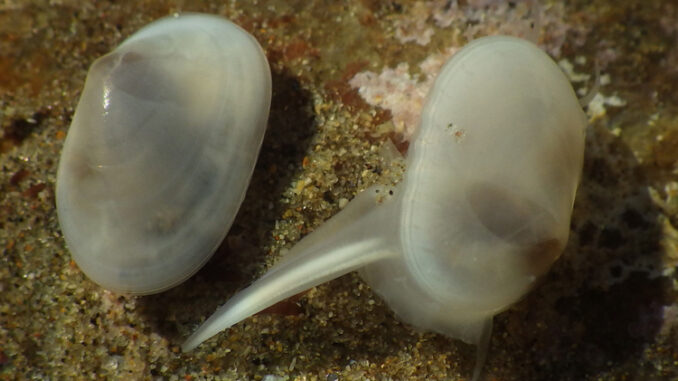
Californian beaches are great places to look for shells. Sometimes, shells are abandoned and broken into smaller pieces. Other times, the shells are intact and have an organism living inside them. That’s what happened recently when a marine ecologist found a small, translucent clam that was alive in its shell. The clam, known as Cymatioa cookae, was thought to be extinct. This clam is a type of mollusk. Mollusks are animals with soft bodies and no backbones. Some mollusks, like clams, are protected by a two-part shell that is connected by a hinge. Clams have two muscles, one on each shell, that keep the shell closed. Clams also have a strong, muscular ‘foot’ that pushes out of the shell. Clams use this body part to move and bury themselves in sand and mud.
The Cymatioa cookae was found hiding in a rocky area off the coast of southern California. Scientists and researchers often search these shores looking for marine life to study. The marine ecologist who discovered the tiny white specks explained that it is not common to find species first known from a fossil record to be alive. And micro-mollusks like these are hard to find because of their size. When he examined the clam, its shell was measured to be 0.4 inches long. This specification matches the fossils of the once ‘extinct’ clam species from thousands of years ago. Researchers will continue to study Cymatioa cookae to understand their habitat, why they left southern California, and how they re-entered the region.
What Do You Think? Some marine animals are only known by their fossils. What can scientists learn from fossils? Why are fossils important?
Photo Credit: Jeffrey H. R. Goddard



